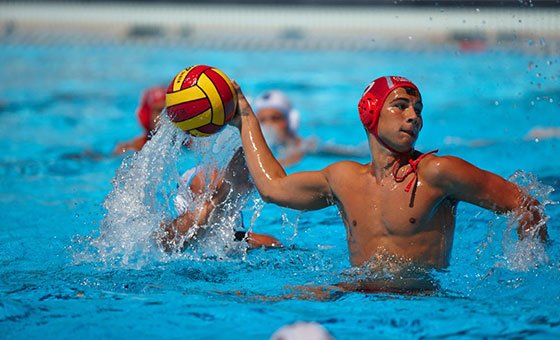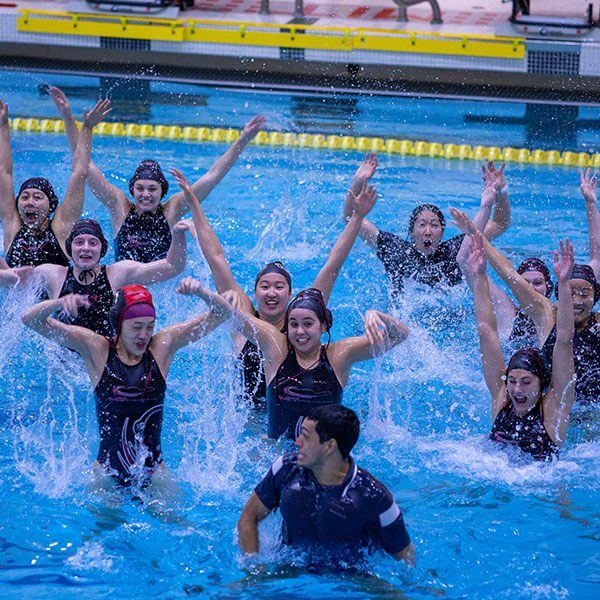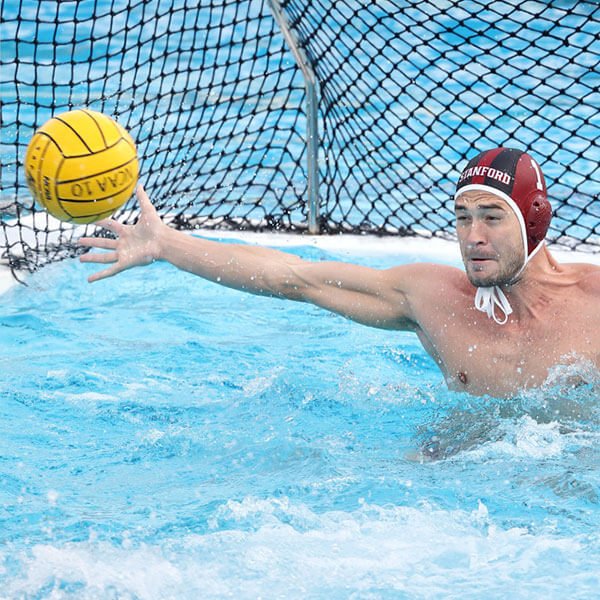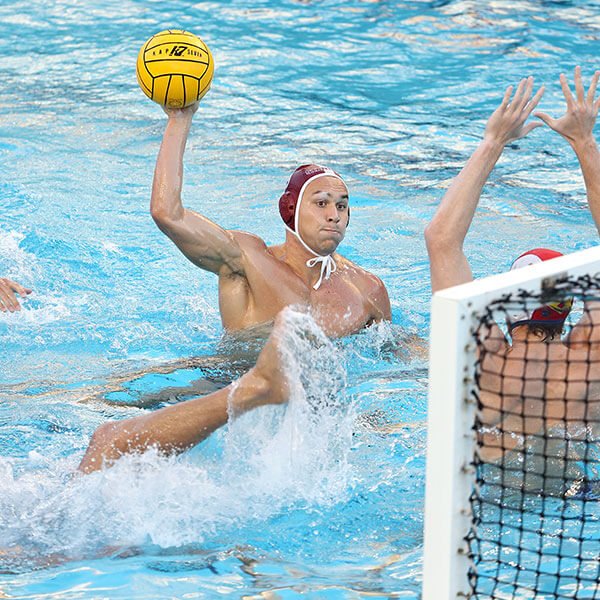Water polo is a competitive team sport played in the water between two teams. The game consists of four quarters in which the two teams attempt to score goals by throwing the ball into the opposing team’s goal. The team with the most goals at the end of the game wins the match. Each team is made up of six field players and one goalkeeper. Except for the goalkeeper, players participate in both offensive and defensive roles. Water polo is typically played in an all-deep pool meaning that players cannot touch the bottom.A game of water polo consists of the players swimming to move about the pool, treading water (often using the eggbeater kick technique), passing the ball and shooting at goal.

Teamwork, tactical thinking and game awareness are also highly important aspects in a game of water polo. Water polo is a highly physical and demanding sport and has frequently been cited as one of the toughest sports to play.Special equipment for water polo includes a water polo ball, a ball which floats on the water; numbered and coloured caps; and two goals, which either float in the water or are attached to the side of the pool.
The game is thought to have originated in Scotland in the late 19th century as a sort of “water rugby”. William Wilson is thought to have developed the game during a similar period. The game thus developed with the formation of the London Water Polo League and has since expanded, becoming widely popular in various parts of Europe, the United States, Brazil, China, Canada and Australia.
Equipments
A water polo ball is constructed of waterproof material to allow it to float on the water.
Rules and Regulations
The rules of water polo cover the play, procedures, equipment and officiating of water polo.
Injury & Medical Advice
Water polo is a demanding game that requires players to tread water or swim for the whole
















